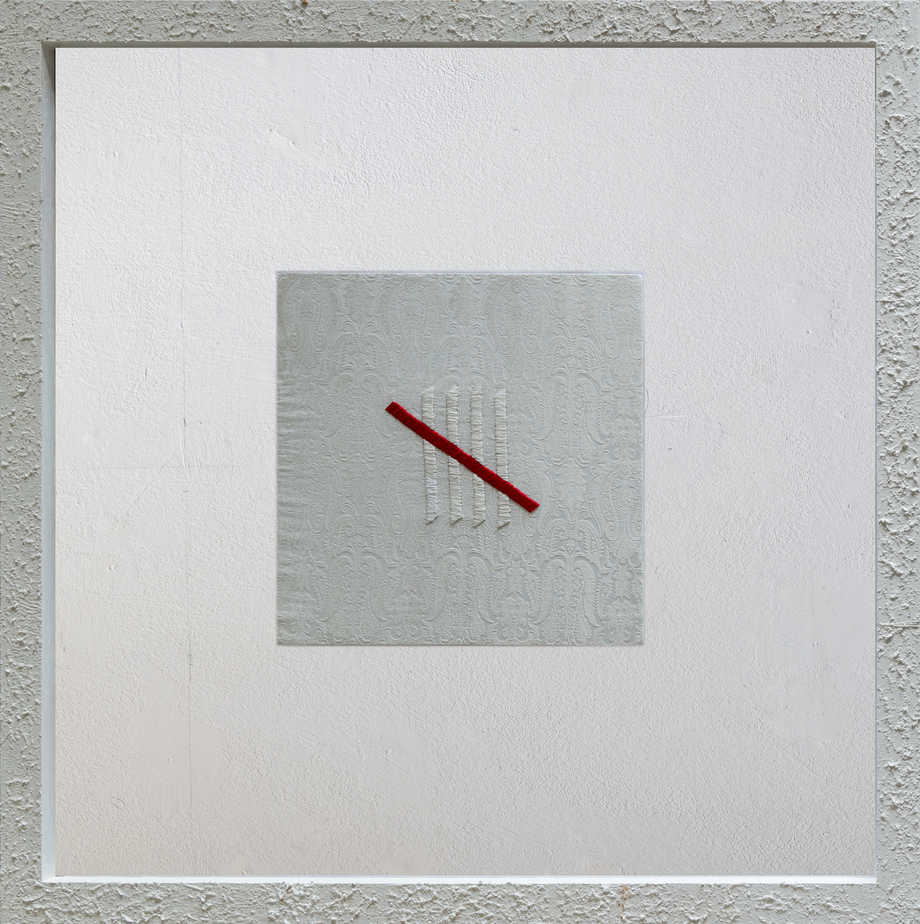
Ma in Japanese culture means the space or interval defined as a void. Exploring the impermanence of life, the silence, the pain and everything that comes in-between, artists Sunaina Bhalla and Sachiyo Sharma have together created a conceptual installation in an exhibition titled – Ma Project.
Being a survivor of cancer, Bhalla has invested her personal feelings in this project. “I have some chronic health conditions and after years of dealing with that, one has to transcend it and come to a state of quietness and acceptance. This project is all about finding the space in-between the pain and relief,” she says.
Both the artists have applied minimalistic expression in using materials that they have either inherited or encountered through life-changing experiences. Works of mixed media, a lot of different materials and mediums have been used. For instance, Bhalla has used debris from blood tests strips and integrated the technique of block printing on bandages.
Hinting at the pain inflicted by the prick of needles, which is reaffirmed in the lives of many including the artist herself, Bhalla weaves steel pins on strips of cloth tied around woven cotton cords. Her works evoke the chilling silence one submits to after bearing pain through illness. The physical agony and the transformation that the human body undergoes when plagued by a life-threatening disease, living with and caring for someone has manifested in her work, literally as well as metaphorically.
In another work, the tally symbol has been used to refer to a measure of count, a method to track repetitive action, whether it is of taking a daily dose of medication or undergoing tests to track one’s health.
Sachiyo, on the other hand, weaves her own paper. She spins the Japanese linen paper yarn with silver thread from Nishijin, inspired by traditional Kimono sashes to weave her works into large paper tapestries.
With around 10 works at display, that took two years to complete, the exhibition explores the emergence of calmness from the trauma of life-threatening conditions. Asking people to be aware of their bodies, Bhalla adds, “In the current environment, health is very important and going back to the traditional healing methods is a good idea, rather than chemicals offered by current medicines.”
So, head to the Japan Foundation between October 10 to 24 to know all about the body and how it deals with pain.
Rival leagues trigger players’ suspensions and a legal battle in Indian golf, for now
Former Delhi CM Kejriwal criticises Centre, Delhi govt over worsening air pollution, alleges AQI manipulation
Delhi Police raids Nangloi unit producing fake engine oil, seizes over Rs 1 crore worth…
Mukesh Sharma reimagines digital components as living matter in his solo exhibition ‘Decoding Digital DNA’
Nine accused were arrested in coordinated raids as police uncovered organised networks supplying mule bank…
Nearly 1.57 lakh PUC challans issued in two months as Delhi steps up GRAP enforcement…